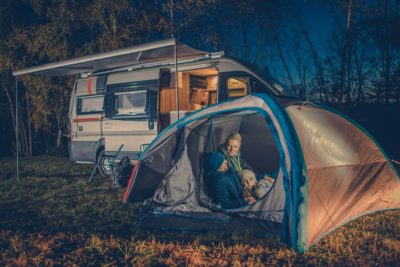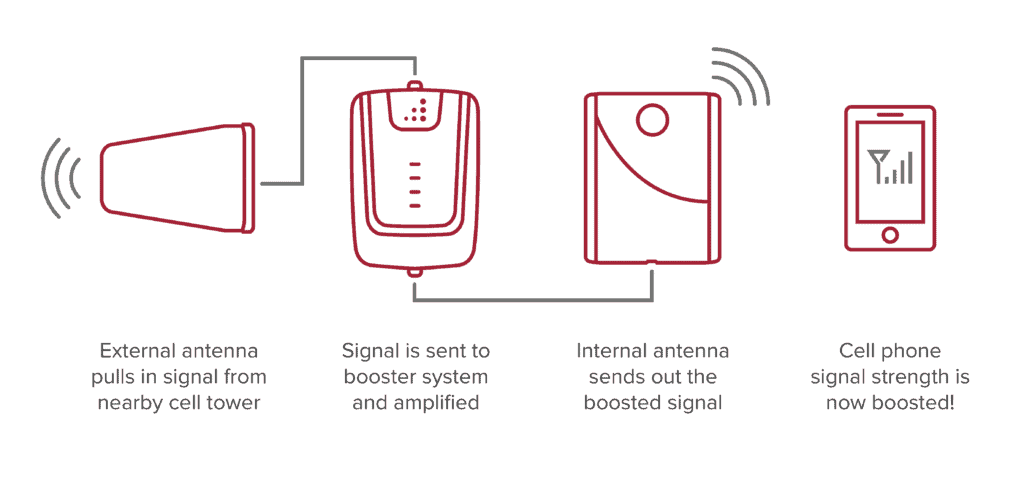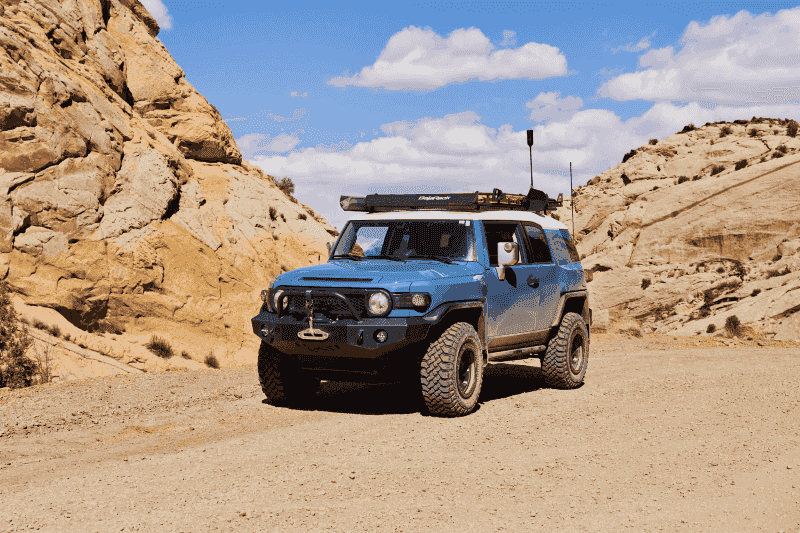Improve Cell Signal While Camping With a Vehicle Cell Phone Signal Booster
Posted on 6/22/2023 by Web Admin
If you like to camp, you’ve probably wondered how to improve cell signal while camping. If you’re in an RV, a little research will turn up plenty of material featuring reviews, videos, and installations of RV cell boosters. In fact, many of them discuss weBoost units like the Destination RV or the Drive Reach RV. But what about car camping? If you’re using your car as a base station, you can use a vehicle cell signal booster to improve your cell signal and stay in touch with the modern world.

Why is your signal so weak when camping?
First, let’s explain how a cell signal works: in its most basic form, a cell phone is essentially a two-way radio between a radio transmitter and a radio receiver. When you talk into the phone, your voice is converted into radio waves which are transmitted to the nearest cell tower.
Think of a long drive through the countryside: if you’re in the middle of nowhere, any radio signals you get will be weak at best. The same goes for your phone: if you’re in the middle of nowhere (away from a tower) then your cell signal will be weak–maybe a bar or two. It’ll have all the problems that a car radio might have with garbled voices, signal going in and out, and building frustration.
When you’re camping, it’s implied that you’re further away from cities. That likely means that weak or undetectable signals are the result of your distance from the nearest cell tower.
Maybe your phone shows it’s receiving a faint signal, but your phone’s transmitter can’t send its underpowered signal all the way back so the tower can receive it. Either way, you can’t effectively use your phone to communicate.
But there can be more to a weak signal than just distance from a cell tower. In addition, any obstruction between your location and the cell tower can block the signal and prevent it from reaching your phone.
Obstructions can include:
- Terrain features, like hills or mountains
- Trees or other vegetation
- The body of your vehicle, if you’re using your device inside it
- Atmospheric conditions, like rain, snow, clouds or fog
How to improve cell signal while camping or backpacking
- If you have access to AC or DC power, such as your vehicle, a generator, or solar power station, you can use a vehicle cell signal booster for your car, truck or RV. These can be a lifesaver!
- Find the highest ground in the local area to minimize terrain obstructions. You want to be able to have the clearest line of communication with the cell tower, free from intervening hills, trees, or buildings.
- Position yourself clear of trees and any other potentially obstructing vegetation. Remember everything that is in between you and your target cell tower is absorbing the signal that you want to be reaching the tower.
- If you’re inside a vehicle, step outside.
- If weather is poor (rain, snow, heavy clouds, etc.), try the cell connection again after it clears.
But what if you’re in a location where none of these tips work, and you can’t get a decent signal? In that case the only thing that may improve cell signal while camping cell signal booster.
How a cell signal booster works
Cell signal boosters use an antenna to collect weak cell signals. Those collected signals are amplified, and then the amplified signals are redistributed inside the vehicle or building so your phone can receive them.
When your phone transmits signals back to the cell tower, the same process is repeated in reverse order. Your cell phone is both a radio transmitter and a radio receiver.
With a booster, cell signals weakened by distance and/or obstacles are amplified, and signal blockers effectively bypassed. That’s how a cell signal booster can deliver strong, reliable reception to improve cell signal while camping.
A cell signal booster is made up of three main parts: an exterior antenna, an amplifier, and an interior antenna. The booster acts like a repeater system that adds strength to the cell reception. Your cell phone reception is captured by the outside antenna, and it is then amplified by the booster and rebroadcast by the interior antenna. The result is that you get more bars on your phone for better reception, delivering clearer calls and faster data speeds.

Will a cell phone booster for camping work for me?
For a cell signal booster to work and improve cell signal while camping, you need a power source – something to plug into. That power source could be your vehicle or even a four-wheel OHV. You’ll need to have the engine on while running your booster, which plugs into your cigarette lighter outlet.
You might also travel with a portable generator or solar power station, which will also work as long as there’s a 12V outlet to plug your vehicle cell signal booster into. Many modern generators or power stations have this on board.
The main thing to keep in mind is that if you’re camping without a power hookup, you’ll need to have something available to power the booster.
Bottom line:
If you have access to a source of power, you can set up a signal booster in your RV or vehicle. But there is one caveat – a cell signal booster does NOT create a signal. To work, it needs a detectable signal to amplify, even if it’s weak. Without a detectable cell signal, a booster has nothing to boost.
So if you’re planning a camping trip to someplace so remote that no cell signal at all reaches that location, a signal booster can’t help there.
Best cell phone signal boosters for camping
A cell phone booster for camping opens up a lot of possibilities for having the convenience and safety of cell reception while camping. If you’re planning to hike or backpack, your vehicle equipped with a cell booster becomes your base station. So at the very least, you know that access to cell coverage is within walking distance if you need it.
Drive Reach Overland- Most Powerful for Overlanding or Offroad Vehicles
- Ideal for SUVs, trucks, and overlanding vans
- Unique folding antenna mount clears obstructions
- Reaches the farthest cell towers
- Boosts multiple devices
- Best booster for remote areas and rugged terrain
Drive Reach – Most Powerful for Vehicles
- Ideal for passenger cars and RVs
- Reaches the farthest cell towers
- Boosts multiple devices
- Best booster for remote areas
Drive Reach RV – Most Powerful for Moving RVs
- Ideal for motor homes of all classes
- Reaches the farthest cell towers
- Boosts multiple devices
- Use parked or in motion
Drive Reach RV – Most Powerful for Stationary RVs
- Ideal for large trailers or parked RVs
- Targets the nearest tower (directed by the free weBoost App)
- Boosts multiple devices
- Use only when parked
Want to learn more about cell signal boosters to improve cell signal while camping? Click on the button below.




